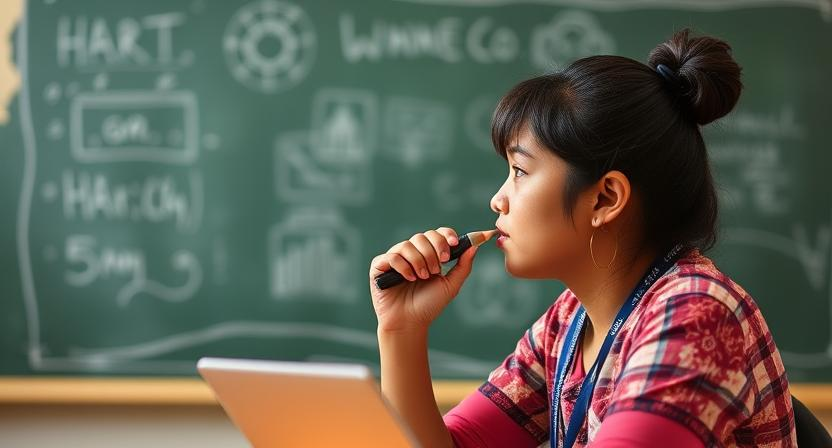Keeping students engaged and attentive during lessons is a persistent challenge in Philippine education. Research-based strategies provide insights into how teachers can effectively encourage students to listen and participate actively.
1. Utilize Culturally Relevant and Multimedia-Based Teaching
Students in the Philippines respond positively to lessons that incorporate local culture and interactive media. A study by Rogayan and Bautista (2019) found that visual and auditory learning strategies significantly improve engagement in science subjects (1). By using educational videos, music, and interactive presentations, teachers can capture students’ interest more effectively.
2. Foster a Positive and Inclusive Classroom Environment
Classroom atmosphere plays a critical role in student motivation. Research by Cabigao et al. (2021) highlighted that a supportive and inclusive environment encourages student participation and improves learning outcomes (2). Recognizing student efforts and maintaining a respectful space can help sustain their attention during lessons.
3. Implement Active and Kinesthetic Learning Approaches
Hands-on activities, role-playing, and movement-based lessons cater to kinesthetic learners and sustain engagement. According to Narca and Caballes (2021), interactive discussions and virtual experiments significantly enhance student interest, particularly in STEM subjects (3).
4. Relate Lessons to Real-World Applications
Connecting lessons to students' daily lives makes learning more relevant and meaningful. The Education Hub (2018) found that real-world applications of classroom concepts enhance student motivation and understanding (4). For instance, integrating financial literacy in math lessons or environmental issues in science discussions makes subjects more relatable.
5. Encourage Student Autonomy and Choice
When students have a say in their learning, they are more likely to engage. Research by Ryan and Deci (2020) on Self-Determination Theory suggests that autonomy fosters intrinsic motivation (5). Allowing students to choose research topics or project formats can boost their sense of ownership over their learning.
6. Set Clear Goals and Provide Constructive Feedback
Students perform better when they understand learning objectives and receive meaningful feedback. A study by Hattie and Timperley (2007) emphasized that goal-setting and timely feedback enhance student motivation and self-regulation (6). Clear expectations help students stay focused and strive for improvement.
7. Promote Collaborative Learning and Peer Interaction
Students learn better when they work together. A study by Vygotsky (1978) on the Zone of Proximal Development suggests that peer interactions help learners process new information effectively (7). Group activities and peer-assisted learning create an engaging and supportive learning environment.
8. Recognize and Celebrate Achievements
Acknowledging students’ progress, whether through praise or incentives, boosts their confidence and motivation. Research by Dweck (2006) on the Growth Mindset theory highlights that recognizing effort encourages students to persist despite challenges (8). Simple rewards, certificates, or verbal affirmations can reinforce positive learning behaviors.
9. Integrate Technology for Interactive Learning
Digital tools and online platforms make learning more engaging. A study by Rodriguez et al. (2023) found that students in blended learning environments showed higher levels of motivation due to interactive elements like quizzes, simulations, and gamification (9). Leveraging technology can enhance lesson delivery and sustain student attention.
10. Use Inquiry-Based and Problem-Solving Approaches
Encouraging students to ask questions and explore solutions deepens their engagement. Research by Chin and Osborne (2008) demonstrated that inquiry-based learning fosters critical thinking and curiosity (10). Instead of passive lectures, teachers can integrate case studies, debates, and problem-solving exercises to stimulate active learning.
By incorporating these research-backed strategies, educators in the Philippines can create more dynamic and motivating learning environments. The key is to make learning relevant, interactive, and student-centered, ensuring that students not only listen but also actively engage in the lessons.
References
- Rogayan, D., & Bautista, G. (2019). Visual and Auditory Learning Strategies in Science Education. International Journal of Research in Education.
- Cabigao, J., Santos, P., & Delos Reyes, A. (2021). Classroom Climate and Student Engagement in Philippine High Schools. Education Research Journal.
- Narca, R., & Caballes, L. (2021). Virtual Experiments and Student Engagement: A Philippine Context. Journal of Science Education and Technology.
- The Education Hub. (2018). 10 Strategies That Promote Student Motivation. The Education Hub Journal.
- Ryan, R., & Deci, E. (2020). Self-Determination Theory: Basic Psychological Needs in Motivation, Development, and Wellness. Guilford Press.
- Hattie, J., & Timperley, H. (2007). The Power of Feedback. Review of Educational Research.
- Vygotsky, L. (1978). Mind in Society: The Development of Higher Psychological Processes. Harvard University Press.
- Dweck, C. (2006). Mindset: The New Psychology of Success. Random House.
- Rodriguez, J., Tan, M., & Salazar, P. (2023). Blended Learning and Student Motivation in the Philippines. Journal of Educational Technology Studies.
- Chin, C., & Osborne, J. (2008). Students' Questions and Inquiry Learning. Science Education Journal.















No comments:
Post a Comment
We’d love to hear your thoughts! Feel free to share your comments below, and please remember to keep them respectful—no inappropriate language, thank you!